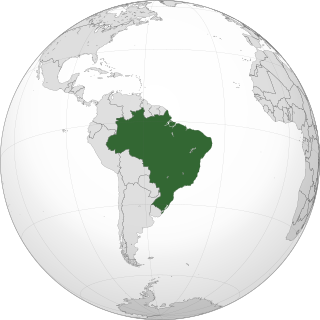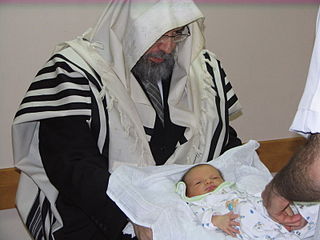Minhag is an accepted tradition or group of traditions in Judaism. A related concept, Nusach (נוסח), refers to the traditional order and form of the prayers.

Samuel Isaac Benchimol was a Brazilian economist, scientist, and professor of Moroccan-Jewish descent. He was also one of the leading experts on the Amazon region. He was assigned to the Amazonian Academy of Literature, Professor Emeritus at the Federal University of Amazonas, researcher at the FEA, community leader president of the Commitê Israelita do Amazonas and entrepreneur founding member of the group Bemol and Fogás.
The baqashot are a collection of supplications, songs, and prayers that have been sung by the Sephardic Syrian, Moroccan, and Turkish Jewish communities for centuries each week on Shabbat mornings from the early hours of the morning until dawn. They are usually recited during the weeks of winter, from the Jewish festival of Sukkot through Purim, when the nights are much longer. The baqashot services can last for three to four hours. The Ades Synagogue in Jerusalem is the center of the Syrian practice today, and communities in Ashdod and Montreal are the center of the Moroccan practice.

The history of the Jews in Brazil begins during the settlement of Europeans in the new world. Although only baptized Christians were subject to the Inquisition, Jews started settling in Brazil when the Inquisition reached Portugal, in the 16th century. They arrived in Brazil during the period of Dutch rule, setting up in Recife the first synagogue in the Americas, the Kahal Zur Israel Synagogue, as early as 1636. Most of those Jews were Sephardic Jews who had fled the Inquisition in Spain and Portugal to the religious freedom of the Netherlands.

Haim Palachi was a Jewish-Turkish chief rabbi of Smyrna (İzmir) and author in Ladino and Hebrew. His titles included Hakham Bashi and Gaon. He was the father of grand rabbis Abraham Palacci and Isaac Palacci and rabbi Joseph Palacci. He was a member of the Pallache family.

Yaacov Haber is a rabbi has taught Jews about Jewish heritage for almost thirty years.
Amazonian Jews are the Jews of the Amazon basin, mainly descendants of Moroccan Jews who migrated to northern Brazil and Peru in the 19th and early 20th centuries. The migrants were attracted to the growing trade in the Amazon region, especially during the rubber boom, as well as to the newly established religious tolerance. They settled in localities along the Amazon River, such as Belém, Cametá, Santarém, Óbidos, Parintins, Itacoatiara and Manaus in Brazil, some venturing as far as Iquitos in Peru.

The Old Jewish Cemetery of Kraków, more commonly known as the Remah Cemetery, is a historic necropolis established in the years 1535–1551, and one of the oldest existing Jewish cemeteries in Poland. It is situated at 40 Szeroka Street in the Kazimierz district of Kraków, beside the 16th-century Remah Synagogue. The cemetery bears the name of Rabbi Moses Isserles, whose name is abbreviated as Remah.

Moroccan Jews are Jews who live in or are from Morocco. Moroccan Jews constitute an ancient community dating to Roman times. Jews began immigrating to the region as early as 70 CE. They were later met by a second wave of migrants from the Iberian peninsula in the period which immediately preceded and followed the issuing of the 1492 Alhambra Decree, when Jews were expelled from Spain, and soon afterward, from Portugal. This second wave of immigrants changed Moroccan Jewry, which largely embraced the Andalusian Sephardic liturgy, to switch to a mostly Sephardic identity.

The Beth Yaacov Synagogue is a synagogue in Madrid, Spain. When it opened its doors in 1968, it was the first new synagogue building built in Spain since the Catholic Monarchs of Spain expelled the country's Jews in 1492.
Baruch Ben Haim was a Sephardi Hakham who served as Chief Rabbi of the Syrian Jewish community in Brooklyn, New York for 55 years. He taught at Magen David Yeshiva and established the Shaare Zion Torah Center at Congregation Shaare Zion. He was a protege of Rabbi Ezra Attiya, rosh yeshiva of Porat Yosef Yeshiva, who trained and dispatched students to leadership positions in Sephardi communities around the world.
Beit Tikvah, officially Congregation Beit Tikvah Ottawa, abbreviated as CBTO, is a Modern Orthodox synagogue located in the Nepean district of Ottawa, Ontario, Canada, serving the Craig Henry area.
Young Israel of Ottawa is an Orthodox synagogue located in Westboro, a suburb of Ottawa, Ontario, Canada. It is a warm and close-knit congregation that provides a full array of religious services, adult classes and family programming open to all Jews in Ottawa.

Isaac Benayon Sabba was a Brazilian entrepreneur. He founded the IB Sabbá Ltda. group and Petroleo Sabbá S.A., the largest business group operating on the Brazilian Amazon region during the twentieth century.

Yom Tov Algazi, the son of Israel Yaakov Algazi, was an Ottoman rabbi who studied under Rabbi Shalom Sharabi and authored major halakhic works. He succeeded Sharabi as head of Beit El and served as Chief Rabbi of Jerusalem and the rest of the country from 1777 until his death.
"Bar Yochai" is a kabbalistic piyyut extolling the spiritual attainments of Simeon bar Yochai, the purported author of the preeminent kabbalistic work, the Zohar. Composed in the 16th century by Rabbi Shimon Lavi, a Sephardi Hakham and kabbalist in Tripoli, Libya, it is the most prominent and popular kabbalistic hymn, being sung by Jewish communities around the world. The hymn is sung by Sephardi and Ashkenazi Jews alike on Lag BaOmer, the Yom Hillula of bar Yochai, and is also sung during synagogue services and at the Shabbat evening meal by certain groups. Incorporating expressions from the Tanakh, rabbinical commentaries, and the Zohar, the hymn displays its author's own mastery of Torah and kabbalah. According to Isaac Ratzabi, the song's use of "bar Yochai" is the probable reason for "bar Yochai"'s modern ubiquity.
The Melbourne Beth Din (MBD) is an Orthodox / Chassidic Jewish court in the city of Melbourne, Australia. Located in Caulfield North, Victoria, it rules mostly on divorces and conversions although it does rule on other matters as well.

The Isaac Ben Walid Synagogue is a synagogue in the mellah of Tetuan, Morocco.
Beit Emanuel is a progressive synagogue located in Parktown, Johannesburg. The synagogue was established in 1954 and is one of the largest progressive Jewish congregations in South Africa. Israeli-born, Rabbi Sa'ar Shaked has been Beit Emanuel's congregational rabbi since 2013. It is an affiliate of the South African Union for Progressive Judaism (SAUPJ), which is part of the World Union for Progressive Judaism (WUPJ). Congregational rabbi, Shaked is currently involved in efforts to establish a Rabbinic Academy and Higher Education Institution in Gauteng.










